NORTH WALES COAST RAILWAY:NOTICE BOARD
Rheilffordd arfordir gogledd Cymru: Hysbysfwrdd
01 February 2021





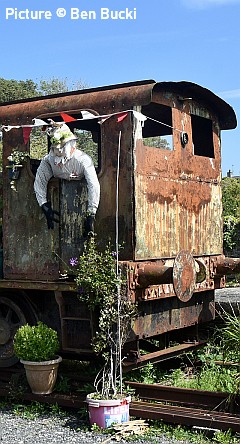
Forthcoming events
(see also our Calendar page for venues)
Note: we have removed all entries relating to meetings as the events are cancelled.
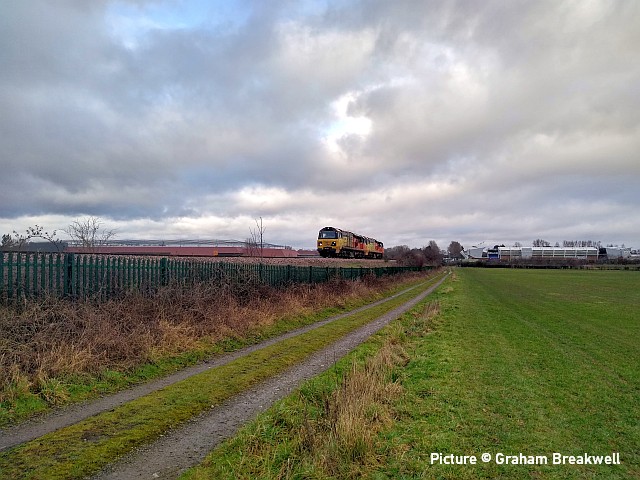
70 811 and 70 809 sandwiched between Meole Brace Retail Park on the left and Shrewsbury Town football club ground, just south of Shrewsbury between Sutton Bridge Junction and Bayston Hill. They were heading to Westbury with the 14:13 from Crewe Basford Hall on 29 January. Picture by Graham Breakwell.
News pictures
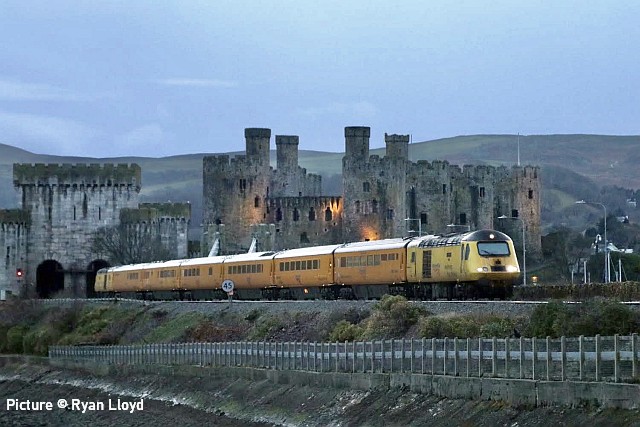
The New Measurement Train with 43 013 and 43 014 working from Derby to Crewe approaching Llandudno Junction on 28 January (Ryan Lloyd)
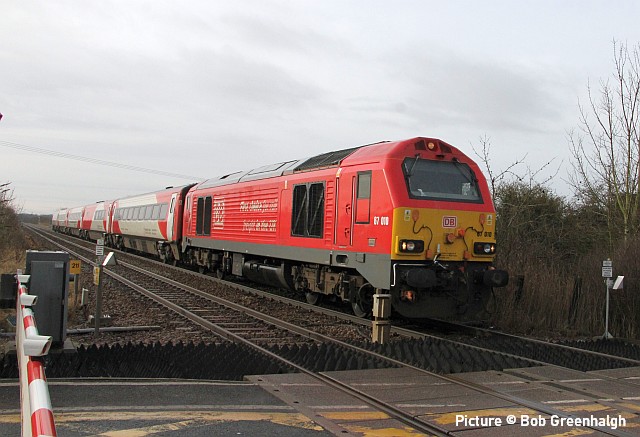
67 010 passes Green Lane on 27 January on a Cardiff - Holyhead trial run. (Bob Greenhalgh). This loco is fitted for working with the Mk4 carriages, but has not gained Transport for Wales livery; perhaps it is to be used only when a dedicated locos is unavailable.
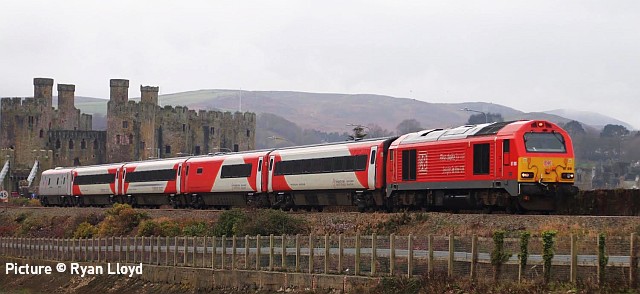
The return working appraches Llandudno Junction (Ryan Lloyd).
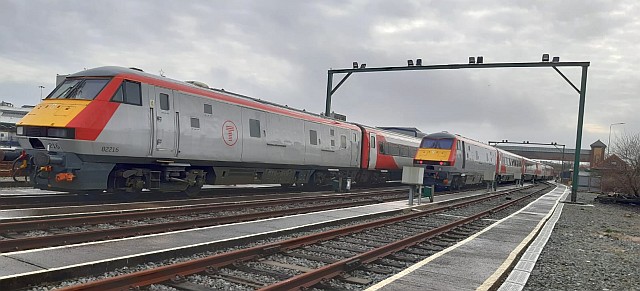
Pictures for us by an authorised member of staff, two of the Mk4 coach rakes, HD02 and HD03, stabled at Holyhead on 27 January.
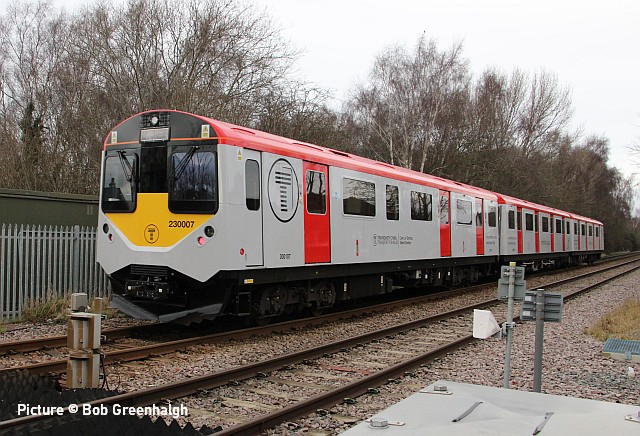
230 007 on a Wrexham - Chester test run passes Green Lane crossing, 28 January. Picture by Bob Greenhalgh.
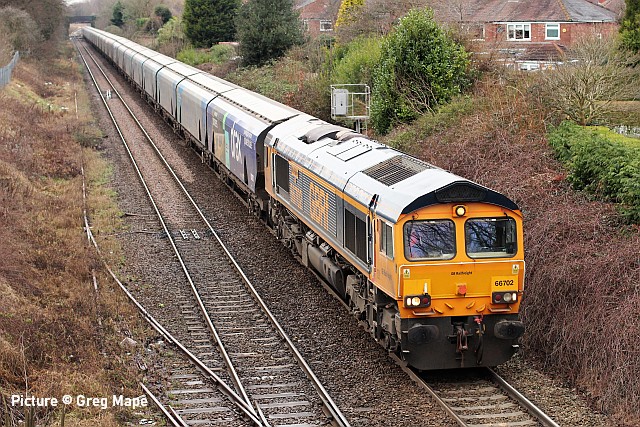
Pausing in his exercise cycle ride, Greg Mape photographed 66 702 Blue Lightning on a Liverpool - Drax biomass service on 26 January.
Remember Abermule
26 January 2021 marked a hundred years after the tragic disaster at Abermule on the Cambrian main line. A series of misunderstandings and slack working resulted in a train departing from Abermule station in to a single-line section which a train in the other direction had already entered, resulting in a head-on collision, leading to 17 deaths and many people injured.
The line was equipped with the electric token system, requiring the train driver to be in possession of a metal token, which could only be released from its holding machine if the line was clear a system is used today on the Conwy Valley line. The driver of the train the station had handed back to the station staff the token for the previous section, and when handed a token which he thought was for the next section, failed to notice that it was the same one he had handed back - despite the section name inscribed on it - and departed.
A film was made by S4C about the disaster in 1998, which is worth a look. It is 25 minutes long and can be found on BBC iPlayer. The film is in Welsh but once the film starts you can switch on English subtitles (in the bottom right of the screen).
It's said that the Indian Railways, where the same system is used, responded by posting signs 'Remember Abermule' in their signalboxes.
A look back - by Peter Hanson
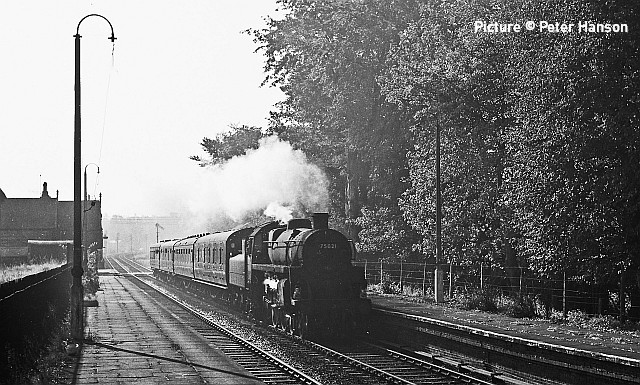
Standard 4-6-0 75021 passing Rossett Station, October 1963, with (I presume) a Shrewsbury to Chester express; the station closed about a year later.
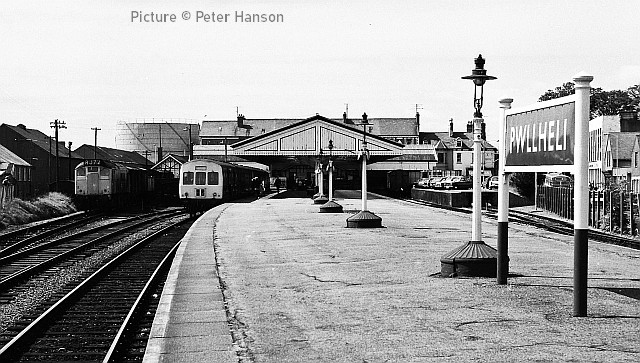
Two photographs taken when we used to holiday on the Lleyn Peninsula, both taken at Pwllheli, August 1972. Above, an afternoon passenger train awaits departure, while a Class 25 loco is stabled in the siding with the freight service.
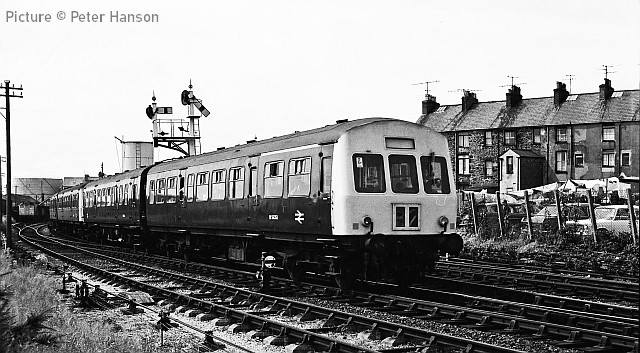
Driving trailer composite M56351 heads a four-car train of Class 101 units, heading for Machynlleth.
From Dave Sallery's archive
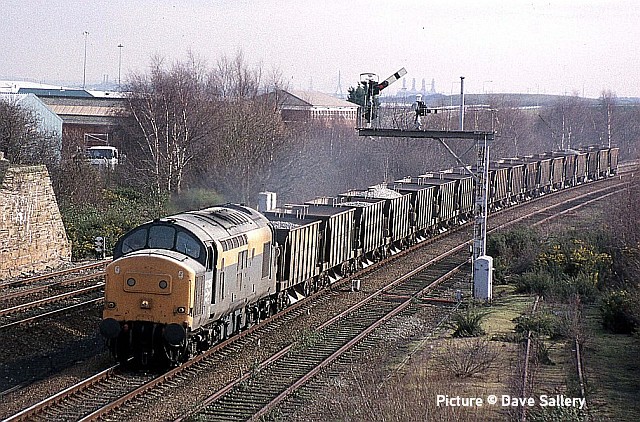
37 255 passes Holywell Junction with ballast empties for Penmaenmawr, 18 February 1998. At that period, trains were loaded at Penmaemawr to travel to specific track-laying jobs, and if it turned out that all the trainload was not used before the train returned for more, some wagons would still be full on return.
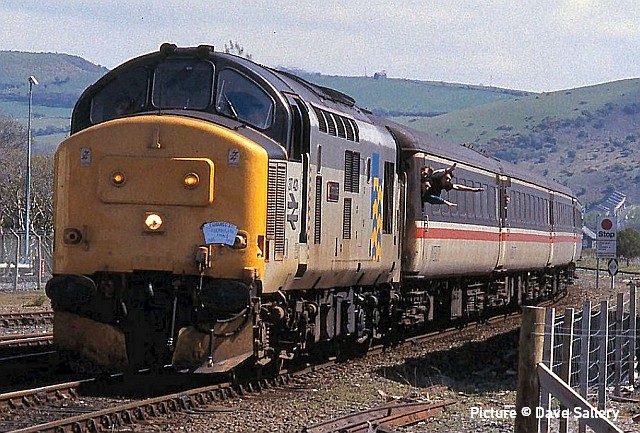
37 421 Strombidae and excited 'bashers' arriving at Aberystwyth with the stock to form the final Up 'Cambrian Coast Express' through train to London, 15:40 from Aberystwyth, 12 May 1991. This loco, later a regular performer in North Wales as The Kingsman, survives in traffic today with Colas, after a period in preservation.
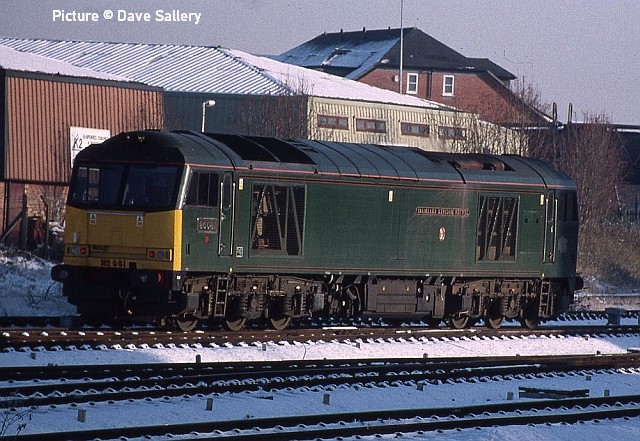
60 081 Isambard Kingdom Brunel at Chester, 21 December 2000. The GWR green 'celebrity' loco was withdrawn in April 2005 after a catastrophic engine failure, and after a long time in store has been purchased by Locomotive Services Limited, intended for cosmetic overhaul and display at its Margate storage facility, formerly the warehouse of the Hornby model railway company.

Latchford Sidings, Warrington, 27 April 1989: 20 021 and 20 121 after reversal with a 'merry-go-round' coal train from Point of Ayr Colliery to Fiddlers' Ferry power station. Today, the colliery is just a memory, and in March 2020 the power station, completed in 1971, ceased to operate and awaits demolition. Class 20s are now a rare sight.
Llangollen Railway visitors 1990-1994 - by David Pool
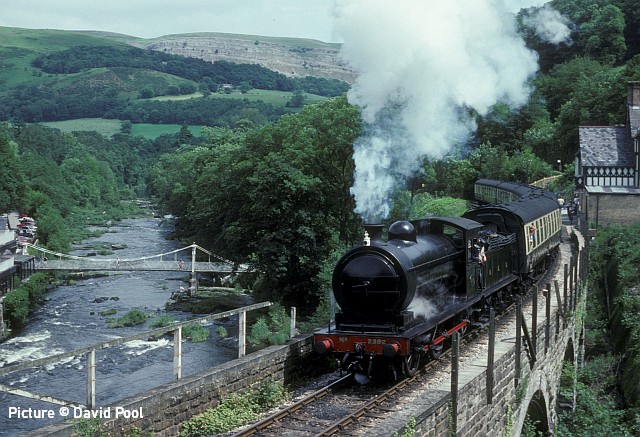
Although locomotives from the LNER were once seen regularly at Wrexham, they would never have reached Llangollen, so the visit of North Eastern Railway No. 2392 was particularly interesting. It had spent most of its working life as a freight locomotive in North Yorkshire and County Durham. Built in Darlington in 1923 to a North Eastern Railway design dating from 1906, it was originally classed as a P3, but later on the LNER it became a J27, numbered 5894, and finally BR 65894 until it was withdrawn in 1967. It was rescued by the North Eastern Locomotive Preservation Group, and restored in a succession of locations, arriving at the North Yorkshire Moors Railway in 1971. The classic shot at Berwyn on 4 June 1992 does justice to a well kept and reliable locomotive.
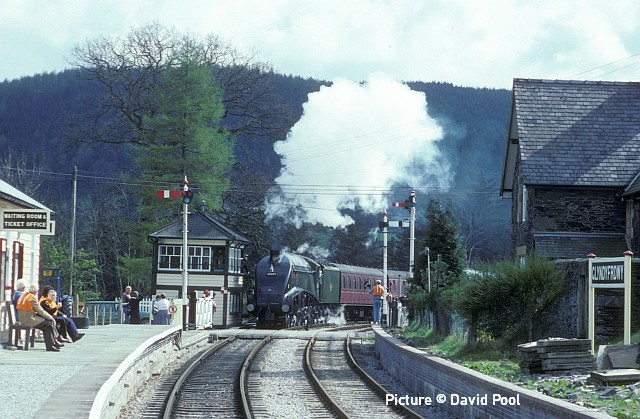
The LNER was a railway which often renumbered its locomotives, and the Gresley Pacifics were no exception. Class A4 60009 started as No.4488 Osprey in 1937, becoming Union of South Africa soon after, and renumbered 9 before Nationalisation in 1948, at which it became 60009. It was withdrawn in 1966 and bought for the private Lochty Railway in Fife, where it stayed until 1973. It then operated occasionally on main lines in Scotland until an overhaul in 1989, after which it became a regular locomotive on BR main line Railtours, having reverted to the name Osprey when I photographed it at Conwy in 1991 (NWCR News 30 April 2020). On the Llangollen Railway at Glyndyfrdwy on 10 April 1993, slowing to exchange the single line token, it was again Union of South Africa. After residing at the Severn Valley Railway from 1994 to 2007, it continued to be seen on the main lines, but on the expiry of its Boiler Certificate in 2020 it was due to return to Fife as a museum exhibit.
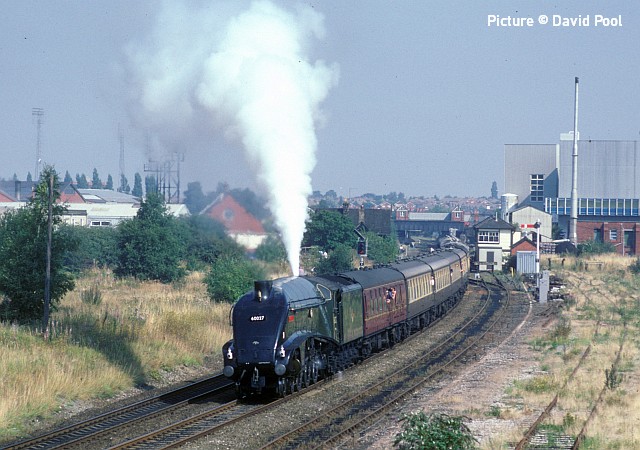
On 31 August 1991, a few months later than my photograph at Conwy, 60009 had been disguised as 60027 Merlin, and was working what was probably a Welsh Marches Express at Croes Newydd, Wrexham. I can accept new-build replicas of locomotives long since scrapped, but somehow it seems wrong to change the identity of a locomotive with so much history, presumably for publicity purposes.
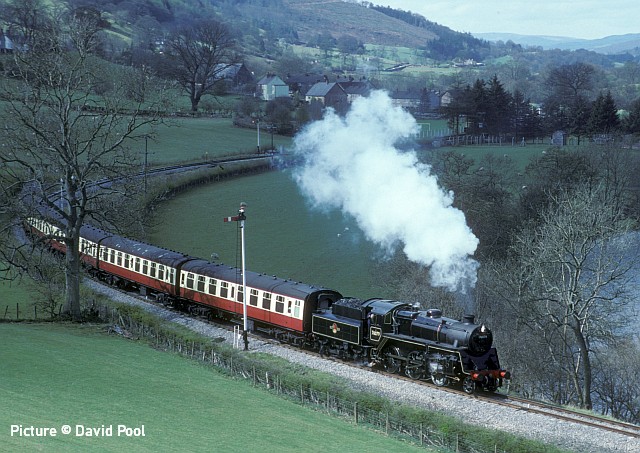
The BR Standard Class 4MT 2-6-0 locomotives were regularly used on freights in the North West, and occasionally on passenger duties. 76079 was built at Horwich in 1957, and after withdrawal was moved to Barry in 1968, where it stayed until 1974. Eventually it was restored in 1989, and visited many preserved railways, being used on the West Coast Railways “Cambrian” trains between 2006 and 2009, after which it was sold to the North Yorkshire Moors Railway. Also on 10 April 1993, 76079 is leaving Glyndyfrdwy and heading for Llangollen, Most visiting locomotives run chimney first away from Llangollen, so this was a welcome change for photographers.
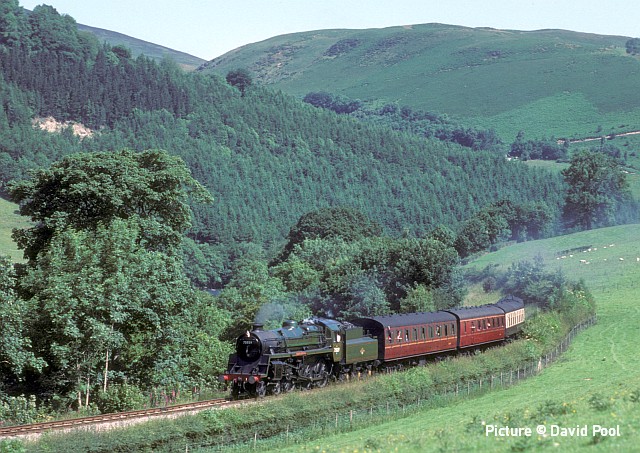
Another BR Standard locomotive, this time a 4MT 4-6-0 75029 The Green Knight, was a visitor from the East Somerset Railway on 27 June 1993, approaching Deeside Halt. This was one of the less common double chimneyed 4MTs, and one of the few seen in green livery, but spent most of its life in BR days in North Wales. It is currently based at the North Yorkshire Moors Railway.
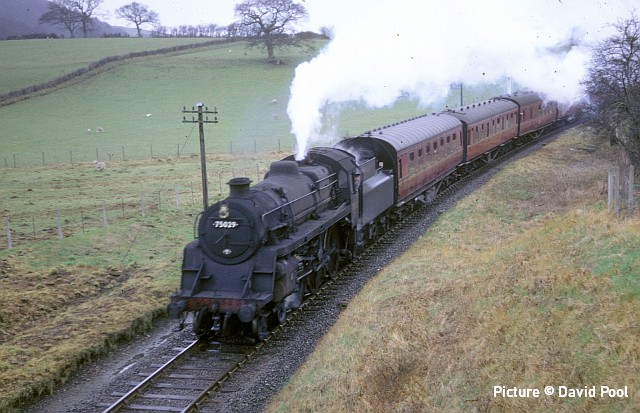
Thirty years earlier, on 15 April 1963, I had photographed 75029 near Bala Junction with the 12:45 from Pwllheli to Birkenhead Woodside, via Llangollen and Wrexham. I believe its shed was Croes Newydd (89B) at this time, but my image is not clear. It is also difficult to verify that it was in a green livery!
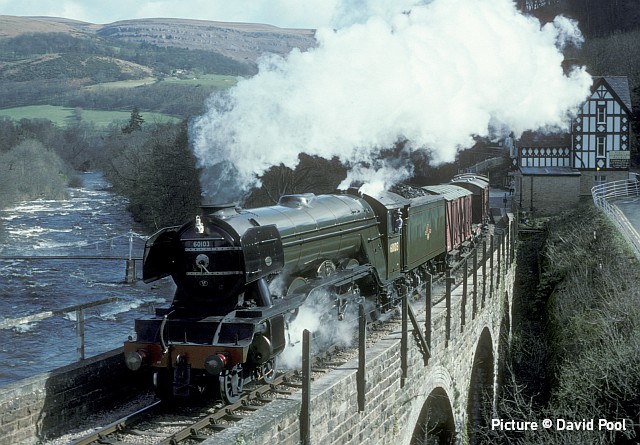
The Flying Scotsman does not just haul tourist and high-class dining trains! Perhaps there were paying customers in the brake van, but demonstration freight haulage is out of the ordinary. 60103 was leaving Berwyn on 26 March 1994. I understand those who always want to see Flying Scotsman as 4472 in LNER green, but my memories of A3 Pacifics in BR days are brought back by 60103 in this BR condition.
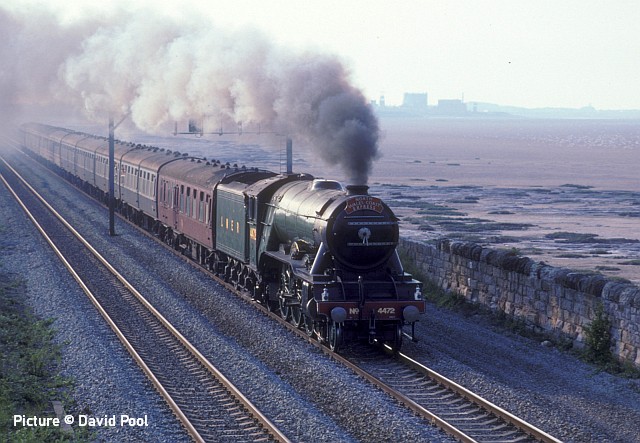
In contrast, a previous visit of the Flying Scotsman to North Wales on 18 July 1990 was in the more recognisable LNER livery as 4472, with the usual mix of BR coaching stock. It was passing Ffynnongroyw, with the Point of Ayr colliery buildings on the skyline. The signal gantry has recently been removed as part of the resignalling project, the colliery is no more and a Gas Terminal in on part of the site.
Winnington and friends
Many thanks to the people who write to confirm that Wallerscote, the sister loco to Winnington in the early days at Llangollen (last issue), Ruston and Hornsby works no. 416207, was named Newcomen when in use by ICI.
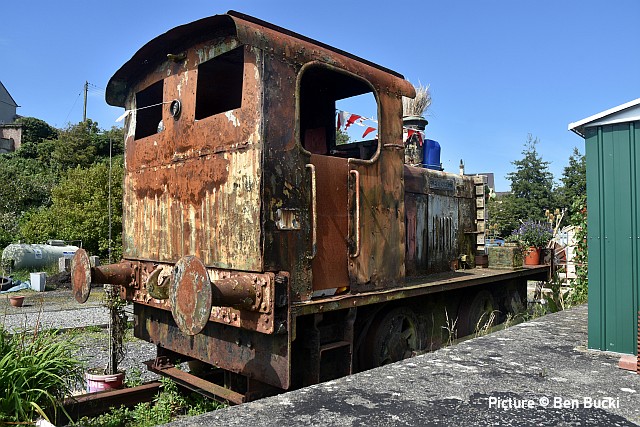
David Pool also mentioned the Fowler loco Eliseg as preserved at the former station of Llanerchymedd on the Amlwch branch. It has been there for some years, and the mention made me wonder what state it is in - and like magic, a few days later I received an email from contributor Ben Bucki answering the question with some images taken 'between lockdowns' last year.
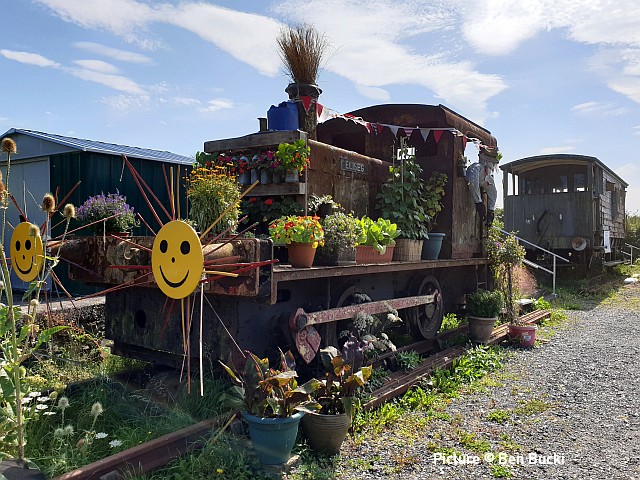
Rather a sorry sight, despite the decorative features. Will it run on a re-opened branch some day? Incidentally, Ben tells us that the adjacent café is excellent.
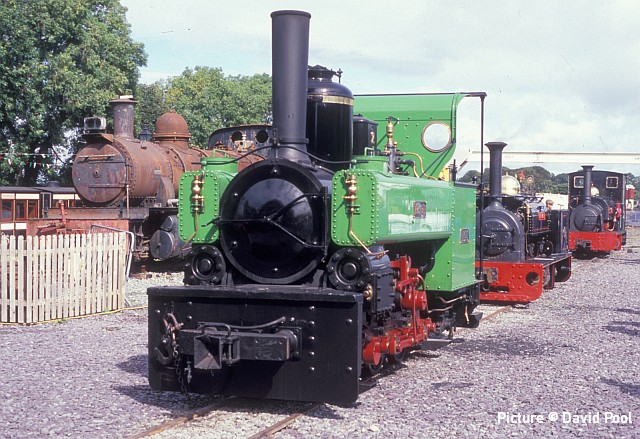
On the same kind of subject, Mark Hambly writes: "David Pool's picture taken at Dinas in 2013 (11 January issue - repeated above) the loco from Statfold is actually just a Corpet rather than a Corpet-Louvet. It is works number 439 of 1884. M. Louvet's interest in the business (arising from his marriage to M. Corpet's daughter) began to appear in the title on the works plates a few years later. The locomotive's high set cylinders and indirect drive arrangement with Brown's valve gear was considered particularly suitable for environments (such as that at Minas de Aller where this loco originally worked) where there was the possibility that the track would not infrequently be under water, thus keeping the most sensitive parts of the drive train well clear of the water, and was also favoured by some builders of rack locomotives.'
Longer life for DRS 37/4s
An interview published in RAIL magazine reveals that DRS intend to retain some of their Class 37/4 locos into the foreseeable future, including some of the class that performed so well on the North Wales Coast in the 1990s, including 402, 425 and 422. The interview can be read on the magazine's website.
Blyth Power - remembered by Martin Weeks
I was very interested to see the photo of 56 134 Blyth Power in the 25 January Notice Board. This name was originally bestowed on locomotive 56 076 by my father in a ceremony at Blyth on 6 September 1982. At the time the loco was based at Blyth Cambois depot and was used on coal trains to Blyth Power Station and other CEGB installations. The naming was to commemorate renewal of contracts for coal transportation to the Power Stations, which at the time had a good future. My father, Robert Weeks, was the Director General of the North Eastern Region of the CEGB - they were the railways’ biggest customer at the time. The name didn’t stay on that loco very long, I remember seeing it in the mid ‘80s with, disappointingly, the name removed. Subsequently 56 076 was named again in the 1990’s as British Steel Trostre, no doubt in a similar customer commemoration event. 56 076 met the scrap man's torch in 2010.
However, in about 1986 the Blyth Power nameplates reappeared on 56 134. The plaque underneath the nameplate which is visible in your photo was fitted later to commemorate a well regarded North Eastern local railway manager, Jim Richardson. I believe that 56 134 was eventually sold for preservation but was the subject of attention from vandals and scrap thieves before it could be secured and was eventually broken up, also about 2010.
My father was presented with a custom made OO scale replica model of 56 076 as ‘Blyth Power’, which now rests happily on my layout. There was also a replica presentation nameplate which was mounted in the Power Station for some years and I believe that was eventually sold for charity. My father also named no 56 123 ‘Drax Power Station’, in 1988.
I discovered the Blyth Power rock band many years later and it is well known that Joseph Porter who formed the band was an avid railway enthusiast. Research shows that the band was formed in 1983 so Porter would have been well aware of the locomotive naming a few months before. I am so pleased that the name continues in use nearly 40 years from its inception, albeit in a completely different world from coal trains on the Blyth and Tyne.
Llangollen signal progress - report by Peter Neve
The completion of the external restoration of the former Weston Rhyn signal box moved a step closer on Thursday 28 January when contractors (Wynnstay Sawmills and Joinery) delivered and installed the component parts of the new stair case and veranda.
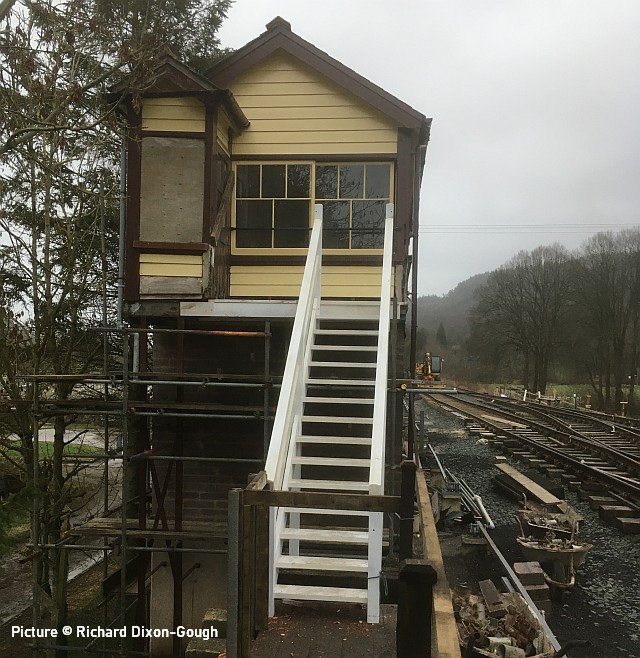
The majority of the installation was completed in a day by the contractors, with just some additional woodwork on the veranda still outstanding. The position of the stairs along the veranda is slightly different from the original due to the constraints imposed by the embankment. The porch and door will be restored once the Covid-19 restrictions are lifted and the volunteer workforce can return to the site. Picture by Richard Dixon-Hough.
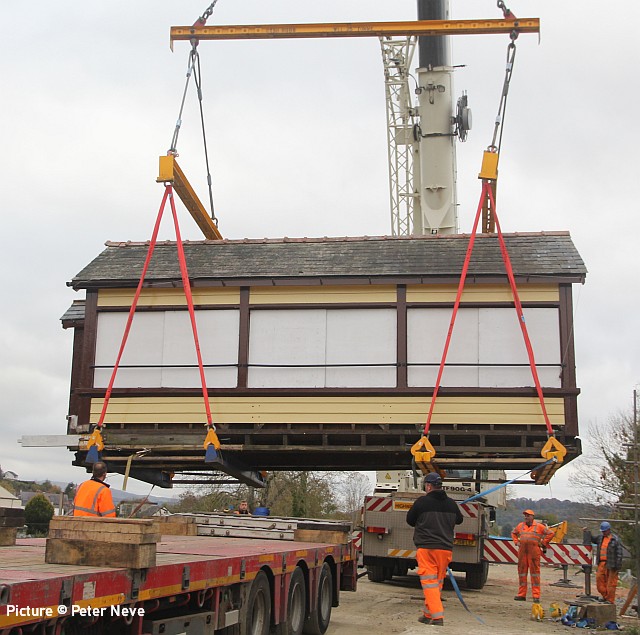
On 25 October 2018 the signal box was moved by road from its home of 27 years at Carrog and craned into position on to the two storey base constructed by volunteers and contractors.
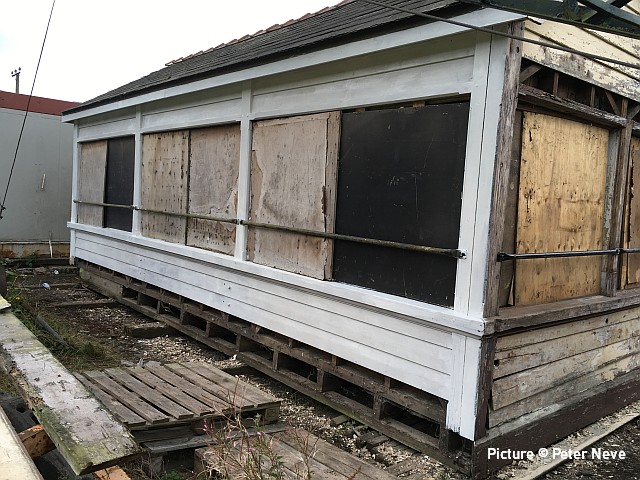
The wooden operating room of the signal box under restoration and refurbishment at Carrog on 14 August 2018.

The signal box in its original position at Weston Rhyn on 8 September 1989, just two years before decommissioning. An unidentified class 31 diesel, working wrong line from Gobowen, stands waiting at the gates with a train destined for the loop to the north of the box.
North Wales Coast home page | Archive | Previous Notice Board